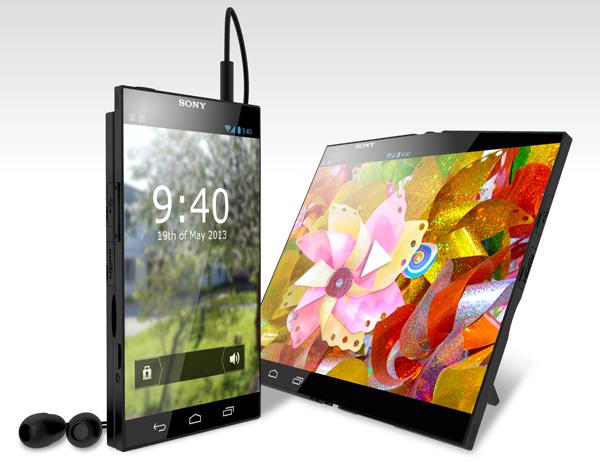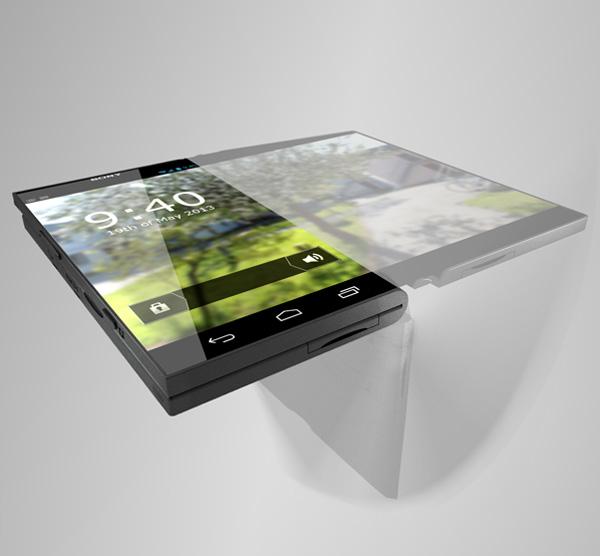
The smartphone and tablet markets are currently in an era of exploration and experimentation. Smartphones and tablets, in respect to other personal electronics such as PCs, are very much new. And because of that, manufacturers are open to exploring new ideas, exercising new designs and experimenting with unfamiliar form factors.
One trend – some are calling it a fad – we've felt the effects of more and more lately is the push for larger smartphone displays. The average smartphone screen size has grown nearly an inch over the last two years, from roughly 3.8-inches to around 4.7-inches. And we have seen some phones breach the 5-inch barrier, like the Galaxy Note at 5.3-inches and the LG Optimus Vu at 5-inches even.
These phone-tablet hybrids were originally conceived as very niche devices. After all, who would want a smartphone that barely fit in their pants pockets? Or one that all but requires two-handed use?
To our surprise, the giant smartphones – appropriately dubbed phablets – overcame insurmountable adversity and have actually become relatively popular since the original launch of the Galaxy Note. And with more than one phablet on the horizon, it makes one wonder if these manufacturers focusing on larger devices are actually on to something.
While only those from a select demographic are going to prefer a much larger display, there are some serious benefits of a significantly larger display in your pocket. For instance, typing becomes noticeably easier with the added real estate; videos and Web browsing are much more enjoyable, too; and the extra room behind the display leaves additional space for more milliampere-hours to be stuffed in the chassis.
I loved the Galaxy Note for the couple months I carried it as my primary device, regardless of how unreliable it was. (I bought an unlocked AT&T Galaxy Note and flashed an unofficial modem to make it work on T-Mobile. Needless to say, it didn't work as well as I had hoped.) I loved the extra real estate and how much more comfortable it was to browse the Web and type. That said, its size wasn't all great, specifically when the display wasn't being used. It made it difficult to handle at times and it literally took up all the space in my pant pockets. Not to mention, it looked very strange and awkward to take a phone call on such a large phone.
The objective phablet manufacturers should be focusing on is keeping the gigantic smartphones as big as possible without making their size a burden to users.
Last Friday, we explored the idea of a pen-shaped smartphone concept that enclosed a retractable, 6-inch flexible AMOLED display. Called ONE, the idea behind the design is novel and unique. But the design also poses quite a few issues, like problems with usability and the rigidness of the display. (If it can be rolled up into the body of the pen, what's going to make rigid enough to use when it's fully extended?)
A more realistic and immediate answer to such a problem might be fitting two displays together. A real life, prime example of such is the Kyocera Echo, although it was never something I would have recommended to anyone. The fact that it shipped with a spare battery in the retail box should have been enough to turn anyone away. The Flip concept, however, was one I have only wished would happen since I first stumbled upon it in 2011.

Coming from design blog Yanko Design, a better solution could stem from a concept called the Sony Pocket Tablet Concept. Making use of Samsung's flexible AMOLED panels, the "unused" portion of the display is wrapped around to the back of the device. A render of the unfolding process is pictured above, as well as the fully closed and open states in the picture up top.
Keeping in mind that this is a concept and that it doesn't have to adhere to modern day technology, the idea is pretty neat. It could allow users to comfortably stow a 7-inch or larger display in their pocket and maintain the luxury of one-handed use when the extra display space isn't needed. That said, I have some issues with the render. As much as the general public seems to want an edge-to-edge display, I do not. Margins along the edge of the device keep your gripping fingers from accidentally touching the edges of the display. I also question the durability of a design like this. Flexible displays are definitely more forgiving than their rigid compatriots, but I don't think I would feel too comfortable with a display that is always exposed on the right edge of the device. That's just asking for trouble.
Thankfully, this is just a concept. But I would still love to see a phone along these lines come to market. A phablet with a larger, on-demand display? That's enough to make me drool a bit on my keyboard, so long as durability and battery life are not concerns.
Does a folding phablet tickle your fancy, readers? Or would you prefer to stick to your typical candy bar phones? Would you prefer something like the ONE? Flip concept? What is your favorite futuristic phablet.